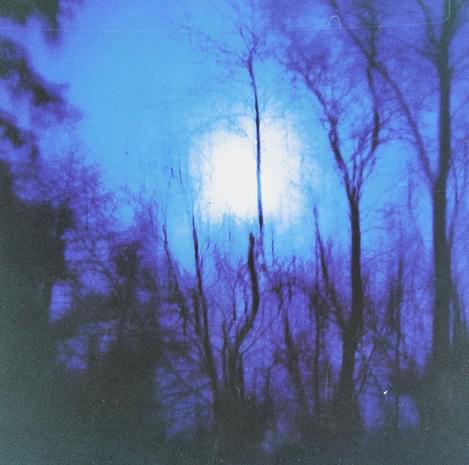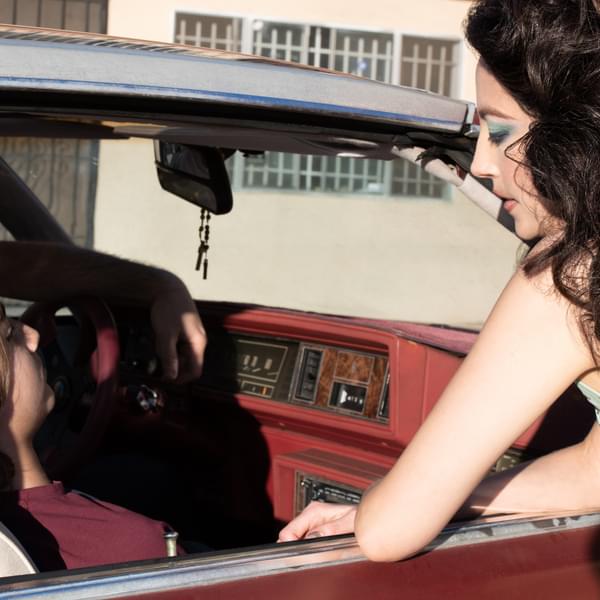The latest instalment in Flying Saucer Attack's reissue series feels like missing pieces to a puzzle
"Distance, Further and Chorus"

Formed in Bristol in 1992 by David Pearce, he recruited Rachel Brook, a member of Bristol-based Movietone, who was a member during most of the band’s lifetime. Most of their recordings were made at home, utilising a home stereo, giving their music a raw aesthetic while also avoiding expensive studio costs. With shoegazing at its peak in the early 90s, Flying Saucer Attack developed a small but loyal fanbase who enjoyed the crossover from shoegaze to experimental space rock. Early albums Distance, Further and Chorus are all receiving a well deserved vinyl re-release on Domino Records after being out of print for many years.
Distance, originally released in 1994, combines a number of early singles, including "Soaring High", "Oceans" and "Crystal Shade" along with a number of additional tracks. Arriving almost three years after My Bloody Valentine's Loveless, it neatly casts a net around influences such as The Jesus And Mary Chain ("Standing Stone", "Crystal Shade") as well as more ethereal sources for tracks such as "Oceans" and "Instrumental Wish". In fact, it's as much of a difference as that of darkness to light. Hearing "Instrumental Wish" for the first time, you'd never - repeat, never - use the word 'shoegaze' to describe the sound. It's as if the music suddenly takes on a life of its own and we're a thousand miles away. It's these tracks which really add to and enhance the story - rather than removing anything. Title track "Distance" takes us on a train journey, for instance, but once again there's an overriding feeling of semi-consciousness and sleep deprivation. We're suddenly a long way from the guitar fuzz of "Standing Stone". It's an interesting listen and you can almost chart the progress of the band as it crafts its sound and finds direction. The album as a whole is varied and could be perceived as struggling to find an identity, but it's also a useful indicator of the future development of the band's sound.
1995 saw the release of Flying Saucer Attack's second album 'proper', Further. It slides straight into experimental territory with layered feedback during "Rainstorm Blues"; however, it's not the kind of track that you'd want to be listening to in your headphones late at night as you're attempting to fall asleep as it's likely to promote nightmares! The album trades progressively on sounds and moves us almost completely away from shoegaze, which in 1995 was pretty much a scene imploding following a surge of interest in American grunge music. There are tracks here, such as "Come And Close My Eyes", with its electric-folk feel, which simply would have felt completely out of place on Distance, but join several dots together on Further. The voice is more prominent than the quiet vocals which occupy the majority of Distance. It's a far more understated piece of work than Distance - and it might also be true to say that there may well be people who enjoy Further - but not necessarily Distance (or vice-versa). While several of the tracks offer both minimalist instrumentation and vocals, others, such as the experimental "For Silence", operate in a completely separate capacity and we can only imagine what thoughts were channelling Pearce's mind as they were originally being recorded.
Chorus, a further compilation released during late 1995, sees us once again transported into experimental territory. "Feedback Song" drifts along and really doesn't head anywhere in particular. But that's absolutely fine, because the space occupied by Flying Saucer Attack is very definitely reminiscent of music I recall from visits to Glastonbury Festival during the nineties, where it was often accompanied by the strong stench of cannabis being inhaled not too far away. Those enjoying the delights of what looked like monster-sized spliffs would have completely freaked out had Flying Saucer Attack been on stage performing "Light In The Evening" or "Popol Vuh III". "Beach Red Lullaby", originally a single, is still gorgeous; Brook's vocals shimmer gently over an acoustic guitar, while feedback comes crashing in around the halfway mark. It makes for a fascinating song. I'd recommend paying the entrance fee for this track alone. In fact, despite Chorus being a compilation, it feels distinctly more 'joined up' than either of the other two albums here and would certainly appeal to fans of Spacemen 3, Loop and Galaxie 500.
So, three albums from one band - but three very different albums. While Distance offers a birds-eye perspective of the development of Flying Saucer Attack's early sound and Further maps out a sparse, minimalistic electric-folk landscape, it's actually Chorus which is both intriguing and beguiling. However, all three albums offer a unique portrait of a band who dared to be different and who deliver an interesting and rewarding alternative to other music from the mid-nineties. With a resurgence of interest in shoegaze bands and successful recent comeback tours from Ride, Slowdive and Lush, it seems only right that a light is also shone on other acts who created music which can be described as possibly even more rewarding now as it was during its original inception some twenty years ago.
Get the Best Fit take on the week in music direct to your inbox every Friday

Momma
Welcome To My Blue Sky

L.A. Witch
DOGGOD






